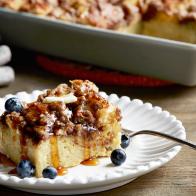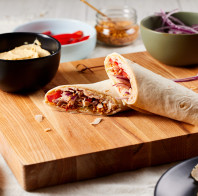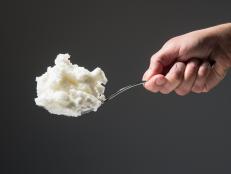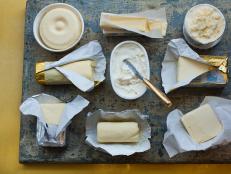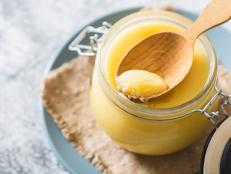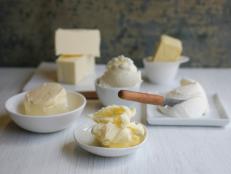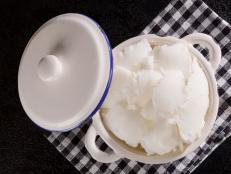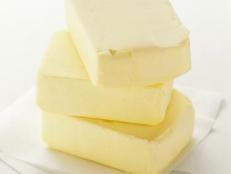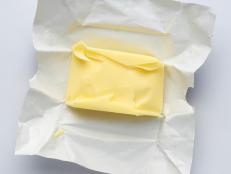How to Soften Butter
Because baked goods and cold butter don't mix.

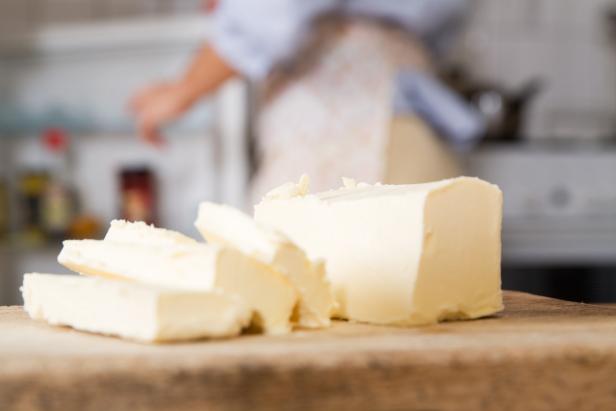
Mitshu
Baking may seem artistic, but it's equally scientific, which means it's essential to use exact measurements — and follow specific directions for ingredient temperatures. One ingredient that is particularly finicky is good ol' butter. There are all sorts of ways you may need to prepare butter when cooking or baking. One of these ways is bringing butter to room temperature, or softening it.
Birthday cakes, chocolate chip cookies and buttercream frosting all call for room-temperature, or softened, butter. Why? The next step is often creaming the butter — quickly mixing it together with sugar — which would be pretty difficult with a hard stick of butter. If the butter isn't at room temperature, it doesn't blend smoothly with the sugar and you end up with a bunch of butter shards with crystallized sugar instead of a nice creamy whip that will make your baked goods light and airy. In short, not softening your butter may result in your cookies going splat instead of puffing up.
If you forget to take the butter out of the fridge before you need it, there's no need to have a meltdown. There are plenty of ways to soften butter in a pinch and still achieve the beautiful dish you intended. You can tell if the butter is at room temperature if it bends a bit. If it snaps, it's too cold; if it starts to lose its shape when you touch it, it's entered the melting phase.
How to Soften Butter 4 Ways
1. Cut Up or Grate Butter
If you cut your butter into chunks instead of leaving it in one big stick, it'll warm up to room temperature much faster. First, measure the amount of butter you'll need, and then unwrap that amount. Cut the sticks into thin slices or chunks, and in around 10 minutes you'll have softened butter. If you really need to speed up the process or are starting from a frozen stick, use the larger holes on your cheese grater to grate the butter. Within five minutes or so your butter should be ready to go.
2. Use Indirect Heat
Chef Gan Suebsarakham, executive chef of San Diego's Pop Pie Co., is quite used to working with softened butter at his SoCal shop for sweet and savory pies. He often softens butter by multitasking — using indirect heat from the stove or the oven to soften the butter.
"What I like to do, especially when cooking other dishes at the same time, is to use the heat my oven produces to soften my butter, by placing it on the stove or a shelf above the stove," he says. "We portion it into small cubes, place it in a large stainless-steel bowl and allow the butter to soften on the stovetop thanks to the heat the oven produces. This also gives you a bit of time to clean up, finish preparing other dishes or just take a breather."
3. Roll Out Butter
A great way to soften butter — and a stress reliever as well! — is to roll it out. There are many ways to do this, but one of the least messy is to place your stick of butter between two sheets of waxed paper. Use a rolling pin to roll it out as you would a pie crust. Peel off the waxed paper and you're ready to go with soft butter for mixing. If it's been a particularly stressful day, you can also pound the butter with the rolling pin and get the same result.
4. Make a Hot Water Bath
If you can create a heat cave for your butter, it'll start to soften quicker. Pour hot water into a ceramic or glass cup or bowl (something that can fit over your butter). After a few minutes, dump the water out of the vessel and quickly cover your butter. The heat from the cup will soften your butter in just a few minutes.
We'd be remiss if we didn't mention using your microwave. There are plenty of internet hacks (and warnings!) about doing so. Microwave temperatures can be wildly inconsistent, and it's easy to go quickly from a solid stick to a melted mess when you're trying to soften butter. If you want to try the microwave method, use very short time increments and/or set the unit at half power, then microwave until the butter reaches the perfect consistency.
Related Stories:




